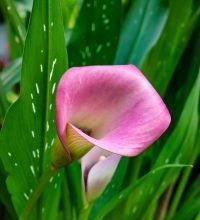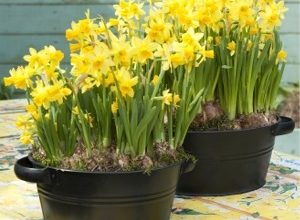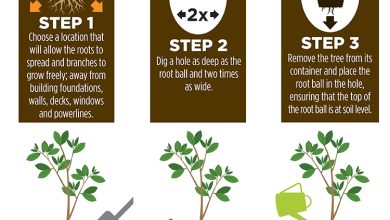Violet Flowers: [Examples, Care, Characteristics and Meaning]
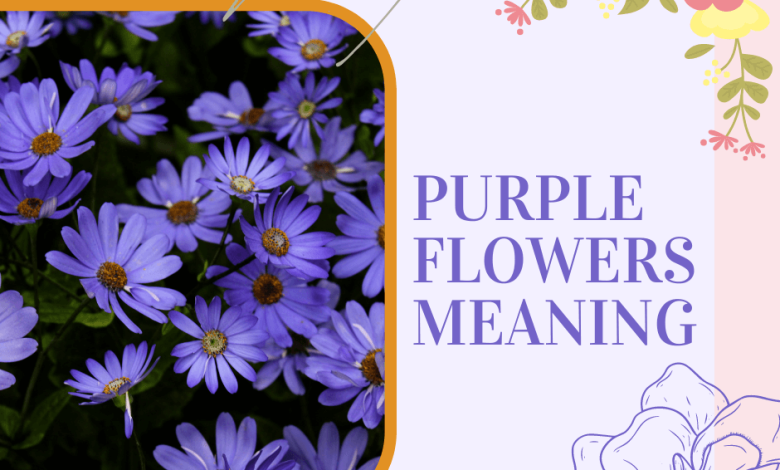
Violet flowers are represented by species that impact visually. Although they are similar to purple flowers, the reality is that violet is a real color of the color spectrum.
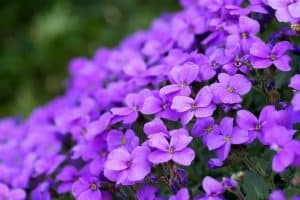 Purple, on the other hand, is a color that is achieved by mixing two primary colors: red and blue.
Purple, on the other hand, is a color that is achieved by mixing two primary colors: red and blue.
However, although the human eye perceives them with different factors involved, at a similar level there is very little differentiation.
But that does not prevent that there are very beautiful and worth mentioning violet flowers
Do you want to join us to meet some?
violets
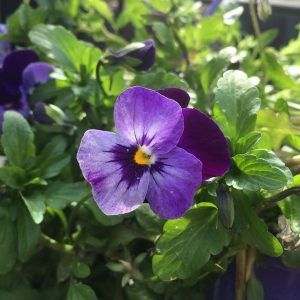 How to start this count without including in the first position this flower that bears the same name as the color it designates? It is a flower that is very easy to see because it is approximately 2 cm in size.
How to start this count without including in the first position this flower that bears the same name as the color it designates? It is a flower that is very easy to see because it is approximately 2 cm in size.
The formation is with wide petals that develop around a center that can be yellow or white, even both. It is a flower that emits an exquisite aroma that is oriented towards the sweet and the delicate.
The violet plant is capable of developing indoors or outdoors, but in the case of exteriors it is essential that it find shade.
royal poppy
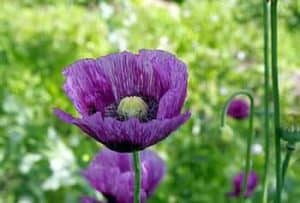 The royal poppy, or opium poppy, is a flower that grows at the base of a stem that comes directly from the root.
The royal poppy, or opium poppy, is a flower that grows at the base of a stem that comes directly from the root.
For this reason, it is a flower that is usually large and that, without a doubt, is the most beautiful part of the entire plant.
The royal poppy is used for many medicinal purposes, so it could do double duty if you have it planted at home.
It is a species that grows outdoors because it needs direct sunlight to be in good health and flourish better.
As for the structure of the flower, it has large petals, rough and overlapping at the edges. The center of the flower is filled with black pistils that culminate in a yellow tip, enhancing the flower’s contrast.
Wallflower
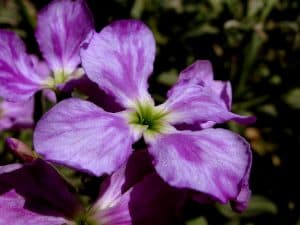 One of the violet flowers that most adorns the environment when spring days arrive is the wallflower. In general they are quite simple flowers, but they are grouped creating a very beautiful environment.
One of the violet flowers that most adorns the environment when spring days arrive is the wallflower. In general they are quite simple flowers, but they are grouped creating a very beautiful environment.
Perhaps one of the most striking aspects is that the petals are not only purple but also have a white discoloration towards the center.
In addition, they are born in a high quantity, allowing the base plant to be highly decorated throughout the duration of flowering. And although it has a white version, this one also has small flecks of purple that make everyone who sees them love it.
The care of the wallflower plant is minimal and it is one of the most resistant species that exist in this sector, even withstanding the cold winter.
Lavender
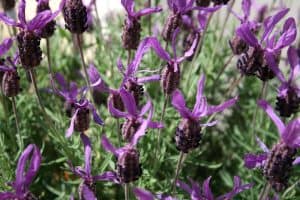 Lavender is also known as lavender stoechas and it is a species that develops through spikes.
Lavender is also known as lavender stoechas and it is a species that develops through spikes.
These spikes come from stems where the plant’s violet flowers are grouped together. It can be seen that the flowers have two well-differentiated branches: the spikes and the bracts.
In the case of the spikes, they are attached to the stem and are numerous, forming an apparently square structure. The end of the stem is with a kind of petals, known as bracts, which are also purple.
As for its care, it is worth noting that it likes sunlight, can survive drought and needs air to avoid pests and diseases.
Geranium of the Pyrenees
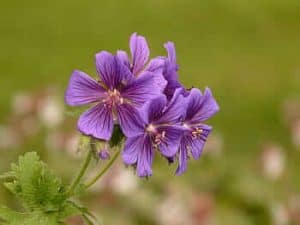 The Pyrenean geranium is a small violet flower but whose color is quite impressive. The ornamental design is reflected by being grouped in sets that allow you to admire the charm from afar.
The Pyrenean geranium is a small violet flower but whose color is quite impressive. The ornamental design is reflected by being grouped in sets that allow you to admire the charm from afar.
Its time to bloom is in spring and it is maintained throughout the summer, as long as the weather conditions are correct.
It does not need much care, in fact, it is well maintained in the fields of the Pyrenees without the need for human attention. However, it is necessary for it to be in semi-shade to avoid sunburn and for the soil to have a slight acidity.
violet daisy
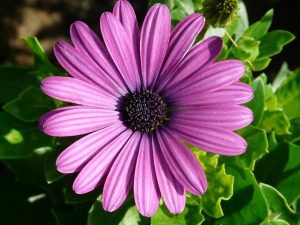 The daisy is a perennial and hybrid flower. It can also be considered a fast-growing and ornamental plant.
The daisy is a perennial and hybrid flower. It can also be considered a fast-growing and ornamental plant.
It is often used by gardeners as beginners because it is easy to cultivate and grow.
Daisies are usually white, but we can also find them in shades of yellow and violet, with a great variety in the petals that surround the traditional yellow eye.
Some smaller varieties can grace the fronts of gardens, while others feature strong, attractive clumps of foliage that provide a backdrop for other flowering perennials in the garden.
Violet flower care
The care of the violet flowers is oriented more to the particular conditions than to the general ones.
For this reason, when carrying out the cultivation of any of them, special attention must be paid to all the care that must be taken. When a good land is chosen to plant them, most thrive without much care.
However, the pH level must be assessed. Around the most specific care will have to work with respect to irrigation, pruning and fertilization.
Characteristics of this type of flowers
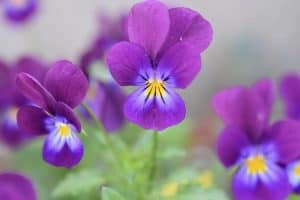 Violet flowers can be found in rustic or delicate versions. They are flowers that are born and develop, more than anything, in spring.
Violet flowers can be found in rustic or delicate versions. They are flowers that are born and develop, more than anything, in spring.
They are not usually very large in size, but there are species that are born from a stem and not in the form of bouquets.
Some violet flowers can be useful to treat health problems and, if the species is well chosen, we could have an ornamental detail and rich fragrance.
Meaning of violet flowers
The violet color has a meaning that is oriented to calm, simple and subtle. Through the flowers, what is sought to be transmitted is these states that play a determining role in emotions.
When a person gives another violet flowers, what they want is for one of these messages to be understood:
- «Calm down, everything will be fine. I’m with you».
- «I like being with you, you are special.»
- “After the storm there is always calm and this too shall pass”.
- «No matter what battles we have to go through, together we will win.»
Therefore, it can be seen that it is not just another color, but a living expression of mutual support. Have you thought about coloring your garden with a violet flower? Is your moment.
Bibliography and references
- Tantardini, Andrea. (2018). Violets and primroses. Cultivation and care. Parkstone International. New York, USA.
- Verdeguer Monge, Antonio; Baraja Bou, María del Pino; Tortosa Martinez, Alejandro. (1999). Wallflower cultivation in a greenhouse for cut flowers. Ministry of Agriculture, Fisheries and Food. Valencia Spain.
- Mari Leon, Ana Isabel; Cirujeda Ranzenberger, Alicia; Brown Sanclemente, Gabriel; Navarro-Rocha, Juliana (2018). Use of long-term mulches in lavender cultivation (Lavandula stoechas L. subsp. Luisieri (Rozeira) Rozeira): control efficacy of weed flora and degradation after one year. CITA-University of Zaragoza. Zaragoza-Spain. Reproduced from: https://pdfs.semanticscholar.org/47d2/abe2dbda1fdba14a593b33e2eb6eb41ad8a0.pdf?_ga=2.203704144.1500269938.1591114512-2099646843.1591114512
- Garcia Carmona, Francisco; Gandia Herrero, Fernando; Scribe, Josefa. (2011). fluorescent flowers. Research and Science Magazine. Barcelona, Spain. Reproduced from: https://www.investigacionyciencia.es/files/2981.pdf

